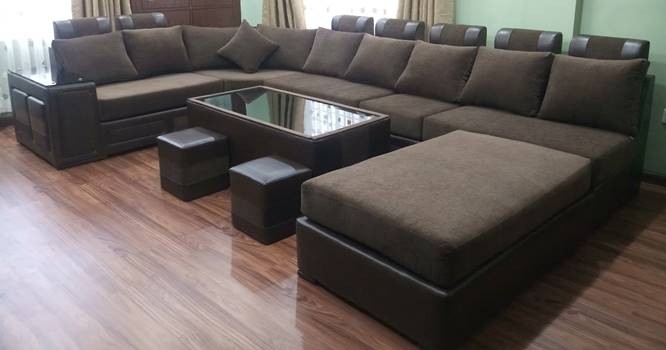Nepali furniture firms heavily rely on imported timber

By Purushottam P. Khatri
Kathmandu, Nov. 26: Nepal’s private furniture firms have still been dependent on imports from the third countries for more than 80 per cent of timbers even though the nation has a capacity to extract 59.28 million cubic feet timber annually.
Around 44.74 per cent of the country’s land area is now covered by forests.
According to conservationists, researchers and forest stakeholders, large volumes (half the total extractable timber) die and decay in the forests due to the lengthy and strict administrative procedures.
The government has categorised forests as national or protected forest, community, leasehold and private forests.
According to the Federation of Forest-based Industry and Trade Nepal (FenFIT), Nepal’s timber entrepreneurs were forced to import timber and other wooden materials worth Rs. 8 to 9 billion annually. Timber in the country are being imported from Myanmar, Malaysia, Indonesia, Vietnam, New Zealand, Denmark, Africa and Australia.
Nepal’s annual timber demand is around 40 to 50 million cubic feet. According to the fiscal year 2017/18 record, the government had produced 7,552,000 (17.55 million) cubic feet of timber from the government, community and private forests of the country.
“Because of the tight regulations against extracting dead timber, nearly 37,654,295 cubic feet of timber in the country get decayed and goes waste in the forests,” Ghana Shyam Pandey, former chairman of the Federation of Community Forestry Users, Nepal (FECOFUN) and present Mayor of Tulsipur Sub-metropolitan City, said.
FenFIT chairman Shyam Sundar Dhakal said that billions of cubic feet of timber are going wastage in the country as they are left to decay in the forests. “And to our great dismay, we are importing millions of cubic feet of timber from other countries,” said Dhakal.
If the government went on blocking the harvesting of dead trees and failed to utilise the resources, the country’s dependency on imported timber products will increase tremendously and will force the people to buy timber at high prices, he said.
Dhakal said the existing provision gave priority to imported timber, as there is no customs charge on timber andtimber related goods. Timber entrepreneurs have been recommending a levy of at least 5 per cent tax on the imported timber. He said that buying timber produced in Nepal’s forests was difficult and very expensive for Nepali entrepreneurs.Dhakal said that 80 per cent of the timber in the warehouses was imported. Thus, entrepreneurs don’t go for Nepali timber.
Nepali saal timber costs around Rs 4,700 to 5,000 per cubic feet, whereas Malaysian saal timber is easily available at Rs. 3,500 per cubic feet, he said. Former Director General of the Department of Forest Krishna Prasad Acharya said that there were tight government regulations that had been preventing timber collection and harvesting of dead trees.
Acharya said that the government’s ban on extracting the Chure forest’s timber since June 16, 2014 had impacted the national demand. The Chure range was declared a conservation area by the government even though it is the largest producer of timber in Nepal.
Acharya said that the community-managed forests can now extract a maximum of 50 per cent of their forest stock by taking permission from the local authorities after the county faced shortage of timber following the 2015 earthquake. “Around 120-150 million cubic feet of timber can be harvested in Nepal if a scientific forest management programme is applied without hampering the environment,” said forest expert Bijay Raj Subedi.
Subedi said that the forests could contribute up to 20 per cent to the country’s GDP from the current 5 per cent if the forest resources were utilised properly.
Recent News

Do not make expressions casting dout on election: EC
14 Apr, 2022
CM Bhatta says may New Year 2079 BS inspire positive thinking
14 Apr, 2022
Three new cases, 44 recoveries in 24 hours
14 Apr, 2022
689 climbers of 84 teams so far acquire permits for climbing various peaks this spring season
14 Apr, 2022
How the rising cost of living crisis is impacting Nepal
14 Apr, 2022
US military confirms an interstellar meteor collided with Earth
14 Apr, 2022
Valneva Covid vaccine approved for use in UK
14 Apr, 2022
Chair Prachanda highlights need of unity among Maoist, Communist forces
14 Apr, 2022
Ranbir Kapoor and Alia Bhatt: Bollywood toasts star couple on wedding
14 Apr, 2022
President Bhandari confers decorations (Photo Feature)
14 Apr, 2022











